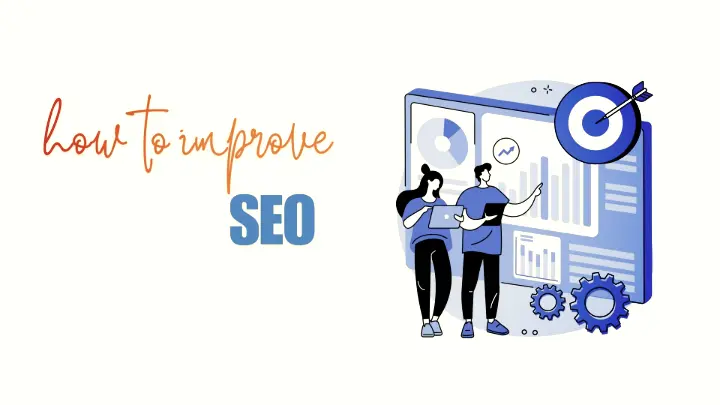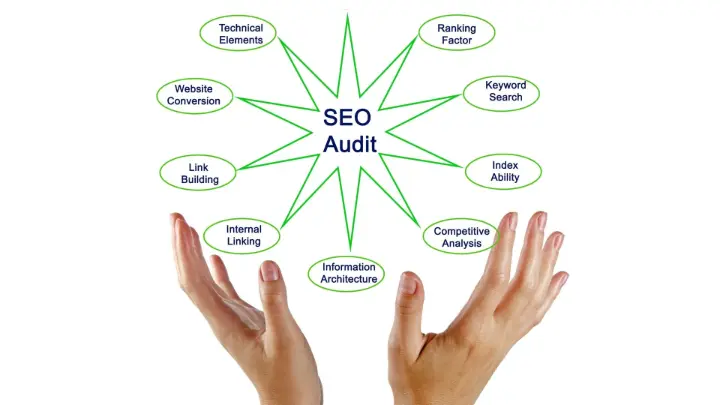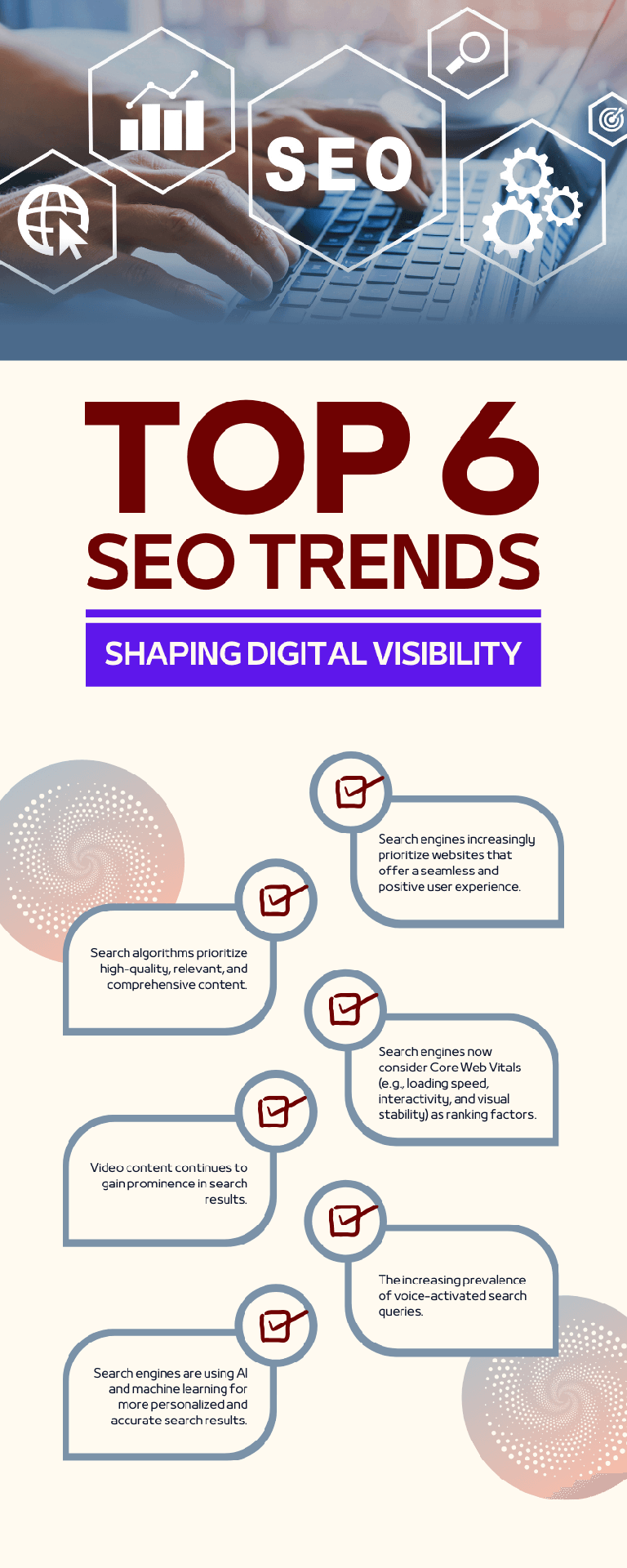Do you want to know, How to improve SEO? This article gives some suggestions in order to improve your SEO and watch the ranks of your website on top of the SERPs.
As we step into 2025, new trends and strategies are emerging that can help you enhance your online presence. This complete guide will walk you through actionable steps on how to improve SEO, covering various platforms including Google, YouTube, WordPress, Shopify, and more.

5 Best Ways to improve SEO in 2025
1. Define an SEO Optimization Strategy
Developing a successful SEO strategy requires foundational practices, advanced techniques, and ongoing analysis. Below are key tactics, tips, and steps to consider when developing an SEO strategy:
Conduct an in-depth Audit
Conduct an in-depth audit of the existing site to detect strengths, weaknesses, and other technical SEO-related issues like slow page loads and broken links, as well as mobile usability. Benchmark baseline traffic, keyword rankings, and conversion rates utilizing Google Analytics, Search Console, and SEO tools like Ahrefs or SEMrush. Inventory content to check which pages rank well and can be left the same and identify those that will need updates or consolidation.

Do Competitor Analysis
Competitor analysis identifies where you are competition is by ascertaining websites that rank well on your long tail keywords assess content structure- keywords used in high ranks on competitor sites by using your tool to reveal sites where these quality back-links originate and build opportunity. Know areas or niches that these sites have you're not then you can actually develop unique different types of articles or content regarding this area.
Keyword Research and Intent Mapping
Using a combination of keyword research tools for example: SEMrush, Ahrefs, Google Keyword Planner, and AnswerThePublic, build a comprehensive keyword list, focusing on finding low-competition keywords that align with user intent and creating targeted content around them. Develop topic clusters by creating pillar pages connected to detailed subtopic content to improve site structure and authority on key topics.
2. Produce Relevant, Authoritative Content
I believe that the key to improving SEO on Google and other search engines is through on-page SEO. High-quality, authoritative, and authentic content will always be your best driver to your search rankings, and as a matter of fact, great content is impossible to replace for any SEO marketer. Quality content, created just for your targeted user, raises site traffic which increases the site's authority and relevance. Fine-tune your web writing skills and become an authority on the topic that you are writing on. Use your SEO strategy and develop or redevelop content in order to boost your rankings.
3. Content should be refreshed regularly
You may notice that we have pretty strong feelings about content. So do search engines. Regularly updated content is one of the best indicators of a site's relevancy, so make sure it is current. Review your content on a routine schedule (every semester, for instance) and update accordingly. Add in sources when relevant, make additions and edits, and keep the content fresh for the user.
4. Have a Link-Worthy Site
A content-rich webpage that is authoritative, not biased, and which helps a visitor learn more about what they are interested in is likely to attract links coming from other websites, which improves your search engine optimization.
Add relevant links within the text to improve authority and credibility. Instead of using "click here" links, try writing the name of the destination. Always use a descriptive link using linking keywords as it not only helps in your search engine optimization but also is a value added to your reader, including those who are suffering from a disability or are using some screen reader.
5. Mobile optimization and technical SEO execution
Ensure that your website is mobile-responsive and will offer a smooth user experience for smartphones and tablets. Don't forget to optimize images and other media for quick loading on mobile devices. You can test your website's mobile-friendliness by using tools such as Google's Lighthouse testing tool.
Use experienced web developers for implementing the best practices in technical SEO. Provide fast, seamless, intuitive, and high-performance user experience through the use of image compression, reduction of HTTP requests, and activation of browser caching. Adopt clean and structured URLs that allow both users and search engines to easily find content. Schema markup enhances rich snippets, thus ensuring greater visibility for content in the SERPs.
How to Improve SEO on Google

Perform thorough keyword research:
This can involve finding keywords to fit the intent of your business. Make use of free tools that will be offering high volume but low competition: Google Keyword Planner and Ubersuggest
On-page elements:
Make sure all title tags, meta descriptions, headers, and content is relevant for target keywords. Keywords may not necessarily mean stuffing it out there naturally without appearing overabused.
Focus on User Experience:
Google favors those sites that deliver an excellent user experience. See to it that your site loads well, is responsive, and offers an intuitive structure of navigation.
Structured Data:
Make use of structured data. It's often called schema markup, which would make the search engine understand better what is available on your page. This increases the visibility for searches using rich snippets.
Content is king in SEO:
Develop informative, engaging, and original content that addresses user queries and provides value.
Quality Backlinks:
Acquire backlinks from reputable sites within your industry. Guest blogging, partnerships, and creating shareable content can help in this regard.
How to find backlinks?
How To Get Quality Backlinks Step-By-Step Guide 2025
How to Improve SEO on a Website

Technical SEO Audit:
Ensure that the site is audited and technical problems of broken links, slow loads, and issues with mobile usability are diagnosed.
Optimize Site Structure:
Your website should have a logical structure, with clear categories and subcategories. This allows search engines to crawl and index your site efficiently.
Internal Linking Strategy:
The internal linking technique is used for connecting related content within your site. This doesn't only make navigation easier, but it also distributes page authority across your site.
Regularly update your content:
Updating existing articles with new information or insights is an excellent way to keep your content fresh, thus signaling to the search engines that your content is relevant.
How to Improve SEO on YouTube

Keyword Optimization:
Just like written content, keyword optimization is the key to video content on YouTube. Use TubeBuddy or VidIQ tools to find keywords for video titles and descriptions.
Engaging Thumbnails:
Create an eye-catching thumbnail that encourages a click. An interesting thumbnail will increase your video's CTR by a considerable margin.
Optimize Video Descriptions:
Write detailed descriptions that include relevant keywords and gives context about the video content.
Engage people:
Always encourage viewers to like, comment, and subscribe to your video. Engagement signals help YouTube algorithm.
How to Improve SEO on WordPress

- Use an SEO Plugin: Install an SEO plugin like Yoast SEO or Rank Math to help optimize your WordPress site easily.
- Optimize Permalinks: Ensure that your Permalinks are structured logically and include relevant keywords.
- Image Optimization: Optimize images by using descriptive file names and alt text that includes keywords related to the content.
- Speed Optimization: Use caching plugins and optimize images to improve loading times on your WordPress site.
How to Improve SEO on Shopify

Customize Title Tags and Meta Descriptions:
Each product page should have unique meta descriptions and title tags that include relevant keywords.
Optimize Product Descriptions:
Write detailed product descriptions with keywords appearing quite naturally while providing valuable information about the product.
Add Alt Text to Your Images:
All the images within your Shopify store need alt text for accessibility as well as help with search engines identifying what those images are about.
Utilize Customer Reviews:
Allow customers to leave reviews. These are actually a source for enhancing credibility within product pages. They increase the rankings too.
Read for in-depth details:
Best SEO For Shopify: Complete Step By Step (2025)
How to Improve SEO for Small Businesses

Focus on Local SEO:
Optimize your Google Business Profile by maintaining it updated and filled with appropriate information, good photos, and regular posts for promotions or other events.
Gather Customer Reviews:
Satisfied customers can leave positive reviews online, which play a major role in ranking on local search.
Create localized content:
Content related to local events or issues is very relevant to your community and helps you connect with the local audience.
Network with Local Businesses:
Partner with other local businesses for cross-promotional opportunities that may lead to backlinks and increased visibility.
Top SEO Trends in 2025

SumUp
How to improve SEO? Improving SEO for the year 2025 cannot remain in conventional solutions. Emphasizing UX design, modern technical tools, and optimization across every applicable platform that users might come onto, like Google, YouTube, WordPress, Shopify, or one of several smaller local business directories helps improve a position online much more easily.
You'll be ready to improve your SEO performance in 2025 and beyond if you keep an eye on SEO trends and modify your tactics as necessary!